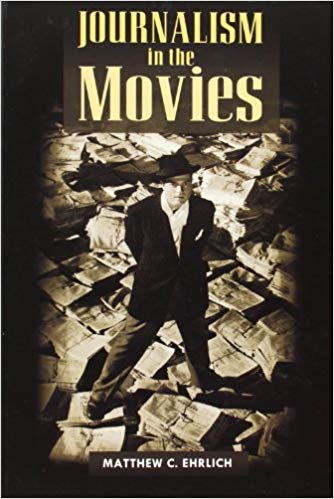
ENCYCLOPEDIA OF JOURNALISTS ON FILM
By Richard R. Ness
Professor of Film and Media Studies at Western Illinois University

Publication date: January 2020. Rowman & Littefield Publishers
Click here to order now
"This is now the gold standard reference book for the image of the journalist on film.
It is magnificent piece of research and scholarship, beautifully written and presented."
-- Joe Saltzman, USC Annenberg
From All the President’s Men to Zodiac, some of the most compelling films of the last century have featured depictions of journalists in action.
While print journalism struggles to survive, the emergence of news from social media outlets continues to expand, allowing the world to be kept informed on a second-bysecond basis. Despite attacks on journalists—both verbal and physical—a free press remains a crucial bastion for civilized society. And just as the daily news reflects the current state of affairs, films about journalism represent how reporting has evolved over the last few centuries.
In Encyclopedia of Journalists on Film, Richard R. Ness provides a comprehensive examination of the fourth estate in cinema—from newspaper reporters to today’s cyber journalists. In this volume, Ness provides in-depth descriptions and analyses of more than five hundred significant films, from the silent era to the present, including international productions and made-for-television movies. The entries focus on the image of the press on screen and ethical issues or concerns raised about the practices of the profession. Collectively, the entries demonstrate that there is a recognizable genre of journalism films with definable plot patterns and iconography. Each entry features:
- Major credits including directors, writers, and producers
- List of characters and the actors who portray them
- Running time
- Plot synopsis
- Analysis of the role of journalism
Many of the entries feature critical reviews as well as cogent selections of dialogue. Films discussed here include comedies such as His Girl Friday (1940), nail-biting thrillers like Foreign Correspondent (1940) and The Parallax View (1974), social commentaries like Network (1976) and The China Syndrome (1979), dramas like Citizen Kane (1941) and The Post (2017), and of course, Academy Award winners All the President’s Men (1976) and Spotlight (2015). A definitive study of a film genre, Encyclopedia of Journalists on Film will be of interest to film scholars, researchers, journalists, and students of popular culture.
HEROES AND SCOUNDRELS: THE IMAGE OF THE JOURNALIST IN POPULAR CULTURE
by
Matthew C. Ehrlich
Professor of journalism, University of Illinois at Urbana-Champaign
Joe Saltzman
Professor of journalism, University of Southern California
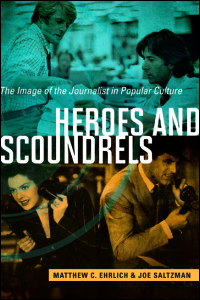
Publication Date: April, 2015 - University of Illinois Press
The Heroes and Scoundrels Website
THE IJPC JOURNAL
an online peer review journal
Available Online:
click here to go The IJPC Journal, Volume Ten - Fall 2022 to Spring 2023
click here to go The IJPC Journal, Volume Nine -- Fall 2020 to Spring 2021
click here to go to The IJPC Journal, Volume 8 - Fall 2018 - Spring 2020
click here to go to The IJPC Journal, Volume 7 - Spring 2016 - Spring 2018
click here to go to The Image of the Journalist in Silent Film: 1890 to 1929
Appendices One to Eleven, 1890 to 1919
click here to go to The IJPC Journal, Volume 6 - Fall 2015
click here to go to The IJPC Journal, Volume 5 - Fall 2013 - Spring 2014
click here to go to The IJPC Journal, Volume 4 - Fall 2012 - Spring 2013
click here to go to The IJPC Journal, Volume 3 - Fall 2011 - Spring 2012
click here to go to The IJPC Journal, Volume 2 - Fall 2010
click here to go to The IJPC Journal, Volume One - Fall 2009
THE IMAGE OF THE JOURNALIST IN POPULAR CULTURE (IJPC) DATABASE©
Available Online
THE IMAGE OF THE JOURNALIST IN POPULAR CULTURE (IJPC) VIDEOS
- The Image of the Journalist in Silent Film, 1890 to 1919, a 6:37:00 compilation with excerpts from 56 movies tracing the origins of the image of the journalist in motion pictures.
- The Image of the Washington Journalist in Movies and Television, 1932 to 2013, a 8:20:00 video compilation with 126 movie and television clips tracing the history of the Washington journalist in the 20th and 21st centuries
- The Image of the Public Relations Practitioner in Movies and Television, 1901 to 2011, a 11:46:05 video compilation with 326 movie and television clips tracing the history of the public relations practitioner in the 20th and 21st centuries.2-11
- The Image of the Gay Journalist in Movies and Television, 1929 to 2009, a 4:42:23 video compilation with 123 movie and television clips tracing the history of the gay journalist in the 20th and 21st centuries. Also included is a special supplement on The Image of the Gay Public Relations Practitioner in Movies and Television. 2009
- The Image of the War Correspondent in Movies and Television, 1931-2007, a 225-minute compilation with 166 movie and television clips tracing the image of the war correspondent in films and television from 1931 to 2007. 2008.
- Journalism Ethics Goes to the Movies, a one-hour-and-50 minute video compilation for IJPC Associates members created to supplement the book edited by Howard Good.(Rowman & Littlefield, Lanham, MD, 2008). Good is a professor of journalism at SUNY New Paltz. He was a pioneering author of a series of books on the image of the journalist in films and novels including Outcasts: The Image of Journalists in Contemporary Films; Girl Reporter: Gender, Journalism, and the Movies; The Drunken Journalist: The Biography of a Film Stereotype, and Acquainted With the Night: The Image of Journalists in American Fiction, 1890 –1930. He’s also written books on media ethics and public education. The IJPC Video follows Journalism Ethics Goes to the Movies chapter by chapter. The book’s 12 chapters explore issues that should concern anyone who aspires to a career in journalism, works in journalism or relies on journalism for daily information. The contributors do their exploring at the movies where sportswriters, war correspondents, investigative reporters, crime reporters, spin-doctors, TV anchors and harried city editors jostle for attention. 2007.
- The Image of the Broadcast Journalist in Movies and Television, 1937-2006, an updated two-hours-and-48 minute video compilation for IJPC Associates members containing 200 movie and television clips tracing image of the broadcast journalist in films and television from 1937 to 2006. 2006.
- Real-Life Journalists in Movies and Television, 1939-2003, a completely revised and updated two-hour-and-13-minute video compilation for IJPC Associates members containing 79 movie and television clips tracing image of the journalist in films and television from 1939 to 2003 featuring real-life journalists or actors portraying real-life journalists or movies based on the lives of real-life journalists. 2005
- Sob Sisters: The Image of the Female Journalist, 1929-2003, a revised and updated two-hour-and-41 minute video compilation with more than 136 movie and television clips documenting the history of the female journalist in film and television in the 20th and 21st centuries. 2004
- Hollywood Looks at the News: 1914-2007, a one hour-and-49-minute video compilation with 165 movie and television clips documenting the history of journalists in film and television in the 20th and 21st century. 2003. Revised 2007
| |
JOURNALISM IN THE MOVIES
by
Matthew C. Ehrlich
Professor of journalism, University of Illinois at Urbana-Champaign
"Exploring the myths of a free press and people in movies since the 1920s, Matthew Erlich's 'Journalism in the Movies' is the book many of us have been waiting for. It treats the much-ignored journalism movies as a distinct genre in film history and is the perfect textbook for any class dealing with the image of the journalist in films. Anyone who wants to understand the public's perception of what journalism and media are all about should read this first-rate book." -- Joe Saltzman, Professor of Journalism and Communication, USC Annenberg.
Matthew C. Erhlich's "Journalism in the Movies" is the story of Hollywood's depiction of American journalism from the start of the sound era to the present. Erhlich argues that films have relentlessly played off the image of the journalist as someone who sees through lies and hypocrisy, sticks up for the little guy, and serves democracy. Focusing on films about key figures and events in journalism, including "Mr. Smith Goes to Washington," "All the President's Men" and "The Insider," "Journalism in the Movies presents a unique opportunity to reflect on how movies relate not only to journalism, but also American life and democracy.
Frank Capra and the Image of the Journalist in American Film
By Joe Saltzman
Click to order here
FRANK CAPRA AND THE IMAGE OF THE JOURNALIST IN AMERICAN FILM
THE MALE JOURNALISTS
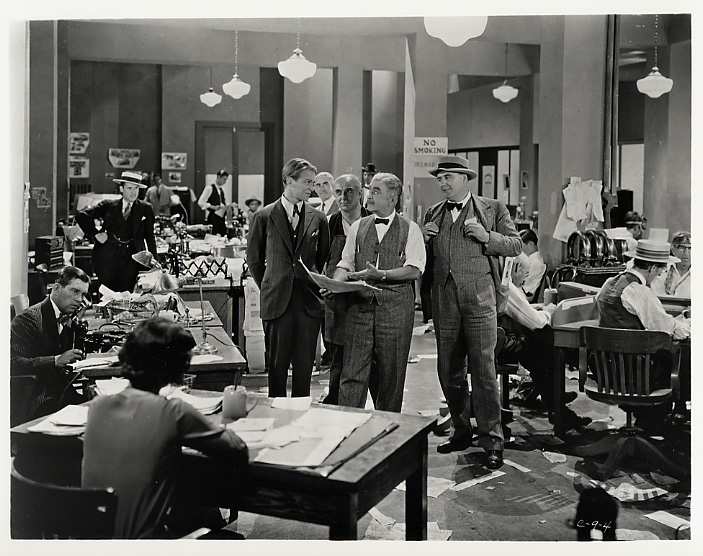
In the middle of the Times city room in The Power of the Press (Columbia Pictures, 1928), the city editor (Robert Edison) congratulates cub reporter Clem Rogers (Douglas Fairbanks Jr.) for getting his first page-one story as the more seasoned reporters gripe that it was all beginner's luck.
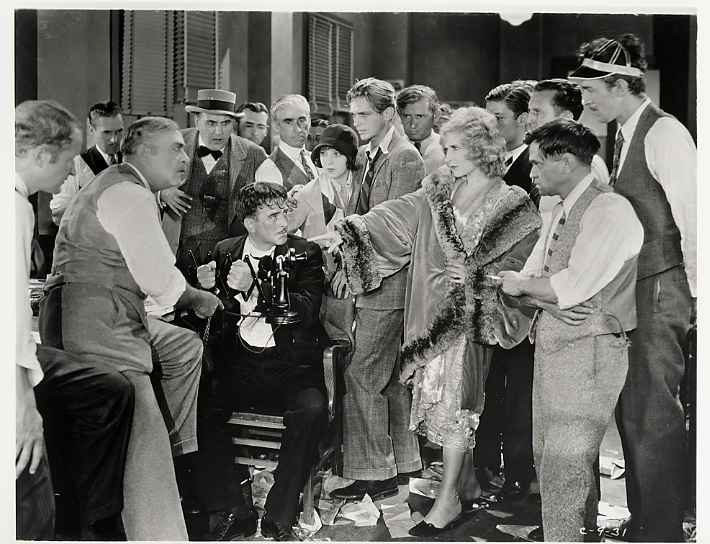
Times cub reporter Clem Rogers (Douglas Fairbanks Jr.) brings in the DA's killer and forces him to confess in the crowded city room as the city editor (Robert Edeson) grills the criminal before the police arrive in The Power of the Press (Columbia Pictures, 1928). The man in the hat watching the action is veteran reporter Bill Johnson (Del Henderson).
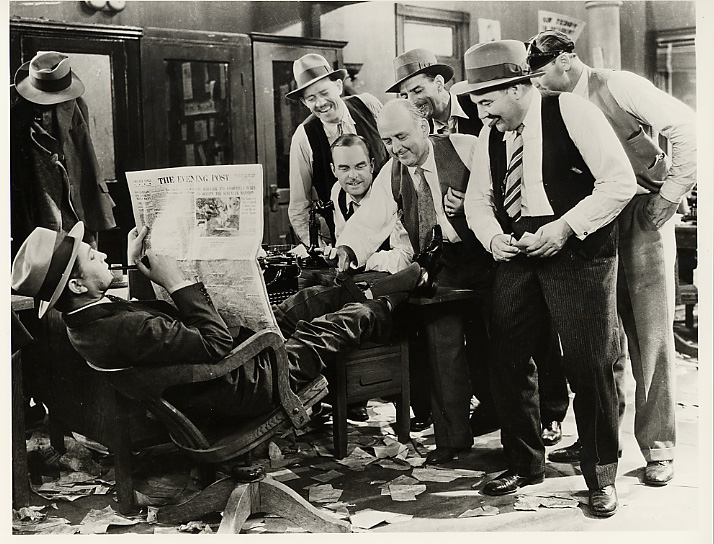
Reporters and Editors of the Evening Post razz Stew Smith (Robert Williams) about his newly acquired gold garters after he secretly marries an heiress in Platinum Blonde (Columbia Pictures, 1931).
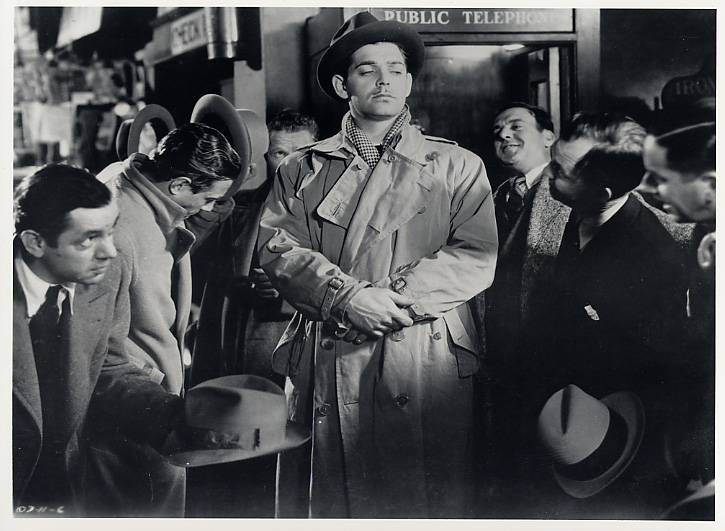
Colleagues congratulate a drunken Peter Warne (Clark Gable) for telling off his editor in It Happened One Night (Columbia Pictures, 1934), but the editor never heard Warne's tirade because he hung up on Warne before it began.

Reporter Diz Moore (Thomas Mitchell) congratulates the senator's secretary (Jean Arthur) in the Senate press gallery on helping the "ambulance chasers" make her boss look ridiculous in Mr. Smith Goes to Washington (Columbia Pictures, 1939).
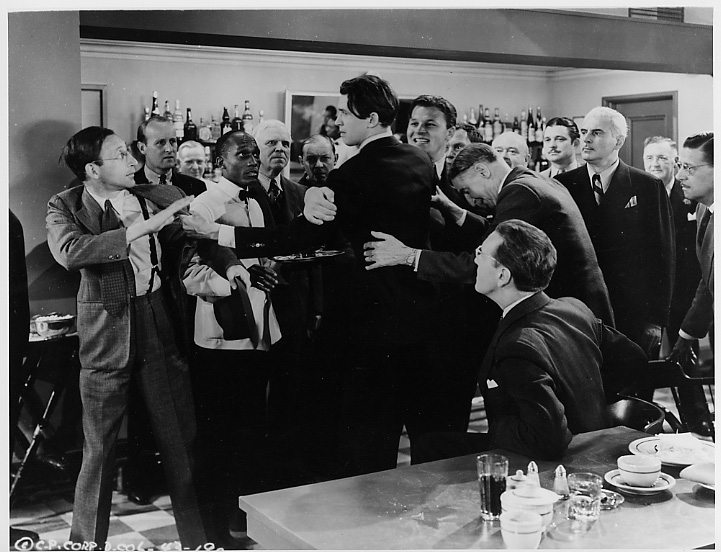
Senator Smith goes on a one-man rampage against the reporters who ridiculed him in the newspapers. Nosey (Charles Lane) runs into the National Press Club in Washington, DC, but a mob of reporters grabs Smith before he can punch the reporter in the mouth in Mr. Smith Goes to Washington (Columbia Pictures, 1939).
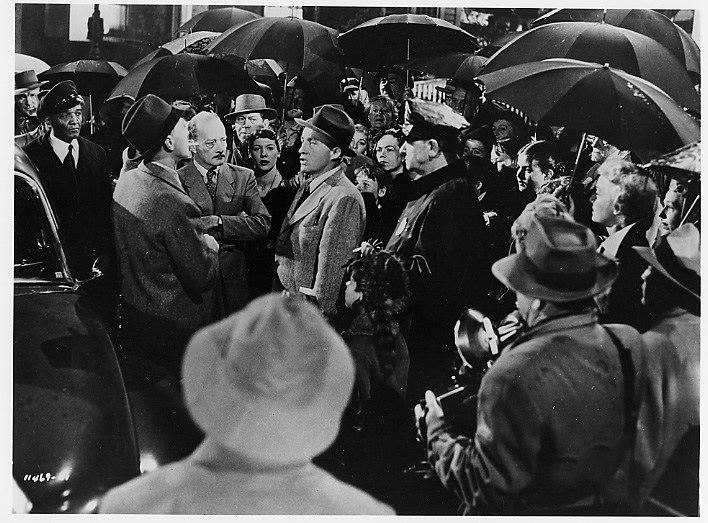
In Here Comes the Groom (Paramount Pictures, 1951), reporter Pete Garvey (Bing Crosby) concocts a real estate fraud and, with the help of his editor, George Degnan (Robert Keith), tries to discredit his former girlfriend's fiance. The real estate tycoon shows up to end the charade and the misuse of the press.
THE FEMALE JOURNALISTS:
HOLLYWOOD'S SOB SISTERS

In Platinum Blonde (Columbia Pictures, 1931), Gallagher (Loretta Young) is "just one of the boys" sharing bylines in the city room with Stew Smith (Robert Williams) and the rest of the male staff.
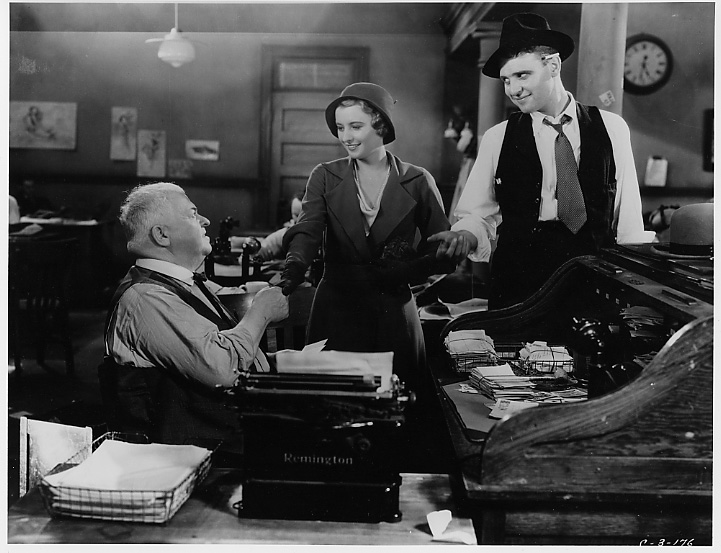
In Forbidden (Columbia Pictures, 1932), Nick, alias "Mary Sunshine" (Harry Holman) turns over his job as advice-to-the-lovelorn columnist to Lulu Smith (Barbara Stanwyck) at the request of Daily Record city editor Al Holland (Ralph Bellamy).
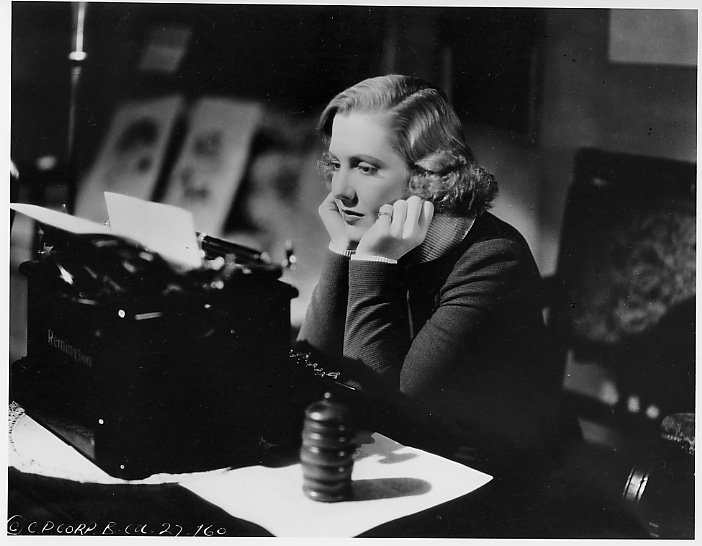
Babe Bennett (Jean Arthur), a mercenary, wisecracking reporter who will do anything to get a story, has trouble writing her latest scoop after she falls in love with the "dumbest, stupidest, most imbecilic idiot in the world" in Mr. Deeds Goes to Town (Columbia, 1936).
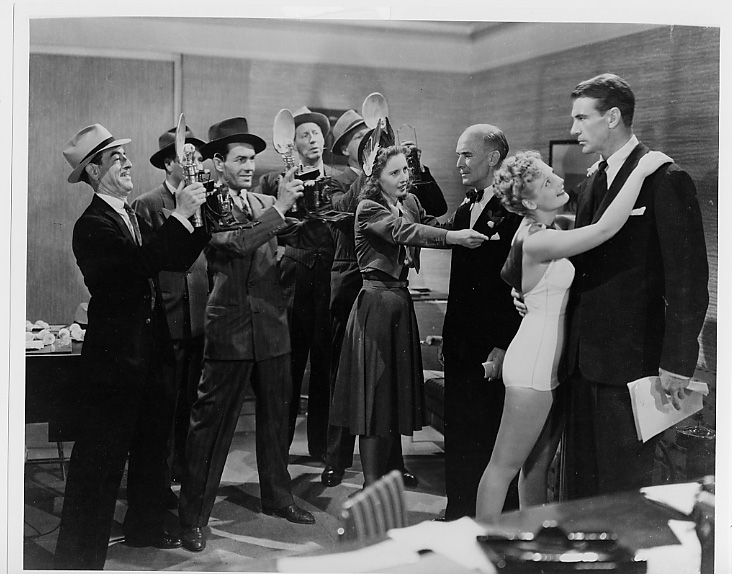
Ann Mitchell (Barbara Stanwyck), editor Henry Connell (James Gleason), and a gaggle of news photographers set up publicity shots for the fake John Doe (Gary Cooper) in an effort to win public approval in Meet John Doe (Frank Capra Productions, 1941). The newspaper stunt snowballs into a national phenomenon.
THE EDITORS
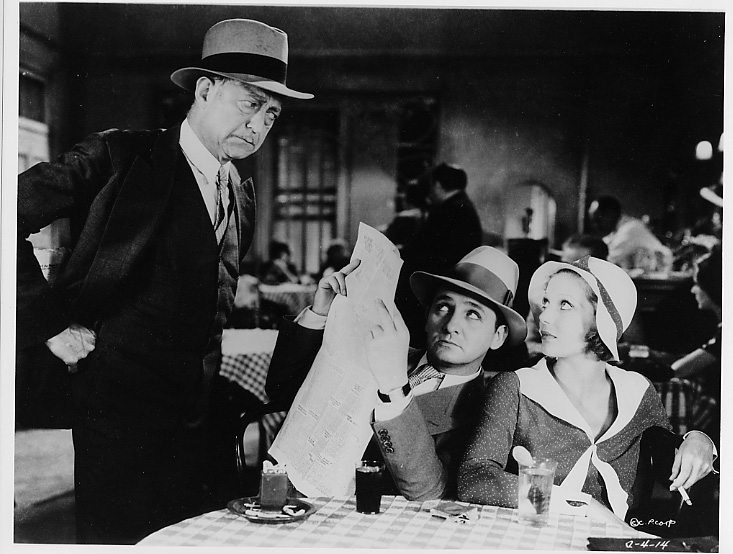
Post city editor Conroy (Edmund Breese) tracks down his star reporter, Stew Smith (Robert Williams), in a bar and reads him the riot act as sob sister Gallagher (Loretta Young) secretly agrees with the editor in Platinum Blonde (Columbia Pictures, 1931).
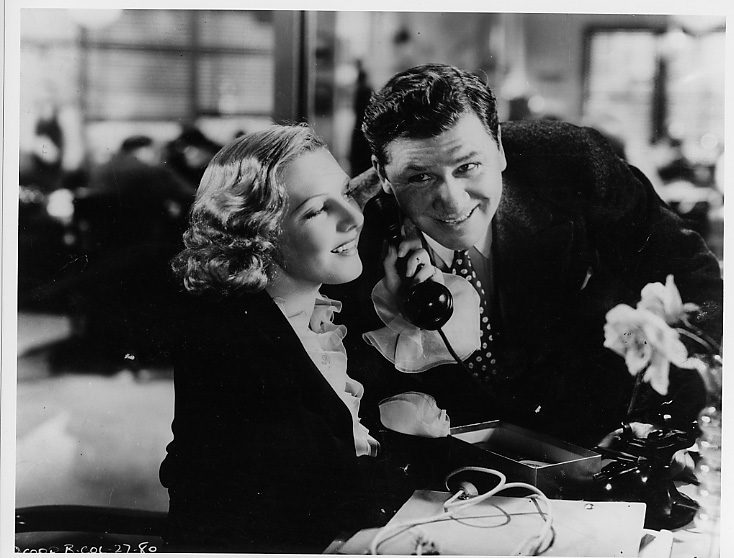
Daily Mail city editor MacWade (George Bancroft) listens in on a phone call by his star reporter Babe Bennett (Jean Arthur), who is scooping the town with her exclusive stories about a new reclusive millionaire in Mr. Deeds Goes to Town (Columbia Pictures, 1936).

New York Mail city editor Joe Gordon (Charles C. Wilson) talks to two reporters at the same time to get the story straight in It Happened One Night (Columbia Pictures, 1934).
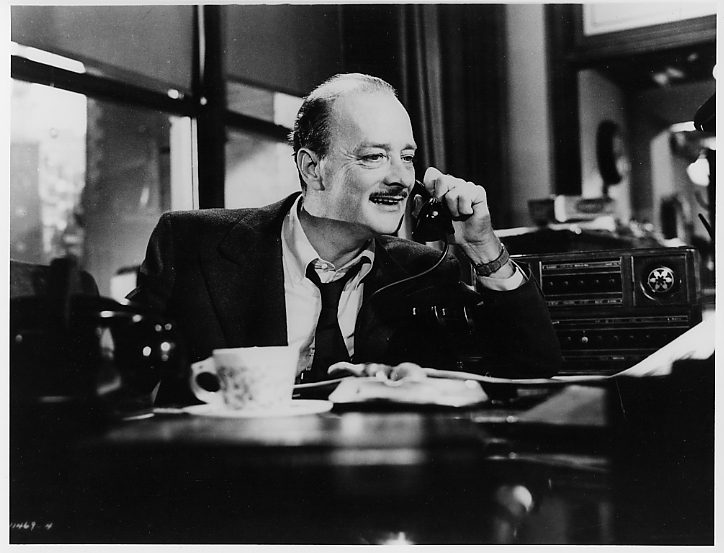
Boston Morning Express editor George Degnan (Robert Keith) threatens to fire correspondent Pete Garvey (Bing Crosby) if he doesn't shape up and do his job in Here Comes the Groom (Paramount Pictures, 1951).
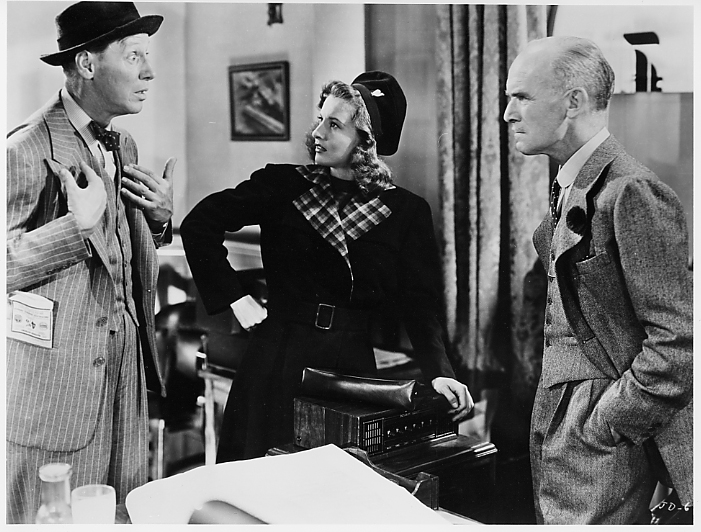
Angry New Bulletin managing editor Henry Connell (James Gleason) and columnist Ann Mitchell (Barbara Stanwyck) listen to reporter Beany's (Irving Bacon) lame excuses in Meet John Doe (Frank Capra Productions, 1941).
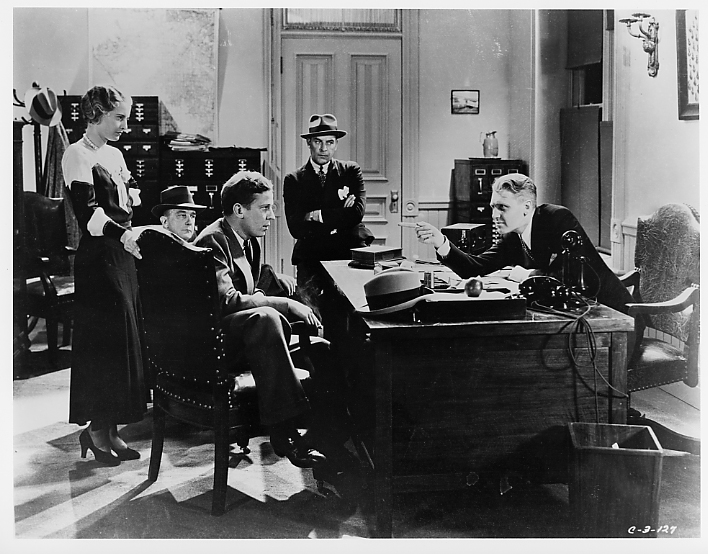
managing editor Al Holland (Ralph Bellamy) chews out his reporters because they can't get the dirt on a candidate for govenor in Forbidden (Columbia Pictures, 1932). Lulu Smith, the advice-to-the-lovelorn columnist
"Mary Sunshine" (Barbara Stanwyck), watches in fear, since she is the politician's secret lover and mother of his adopted child.
THE PUBLISHERS AND MEDIA TYCOONS

Jim Taylor (Edward Arnold) is as brutal a media tycoon as ever put on film in Mr. Smith Goes to Washington (Columbia Pictures, 1939).
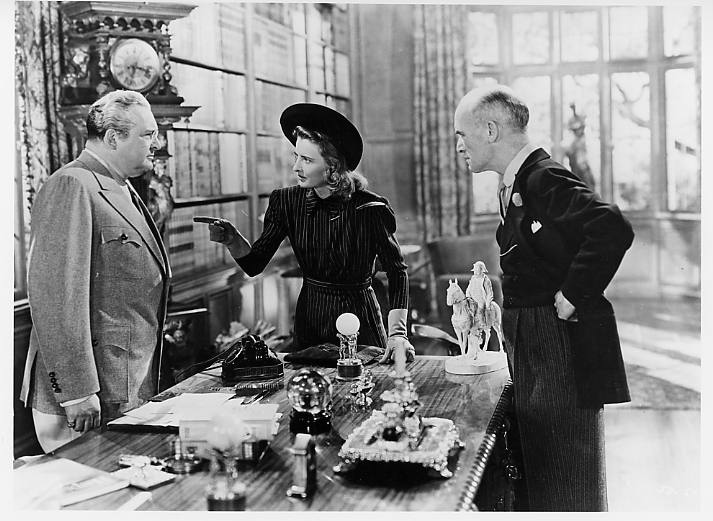
Ann Mitchell (Barbara Stanwyck) tries to persuade New Bulletin publisher D.B. Norton (Edward Arnold) of the value of the fake John Doe as a legitimate story, but skeptical editor Henry Connell (James Gleason) doesn't like the entire scheme in Meet John Doe (Frank Capra Productions, 1941).
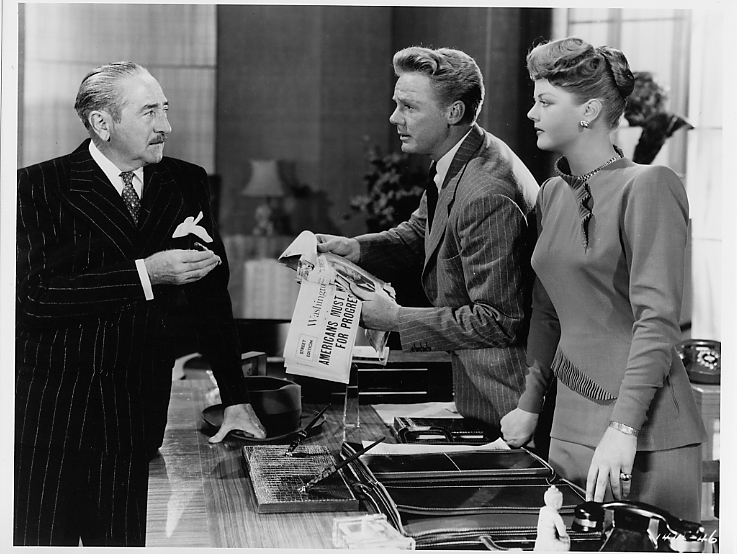
Kay Thorndyke (Angela Lansbury), head of the powerful Thorndyke Press, and Spike McManus (Van Johnson), a cynical columnist, team up with a political adviser (Adolphe Menjou) to figure out how to take over the White House in State of the Union (Universal, 1948).
